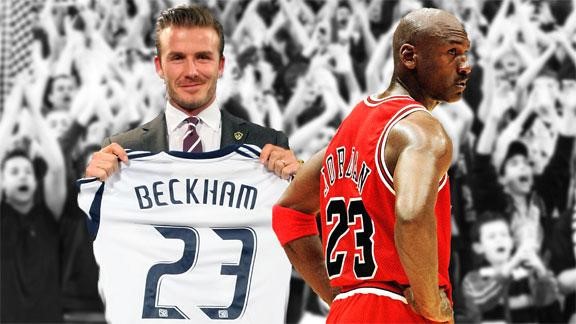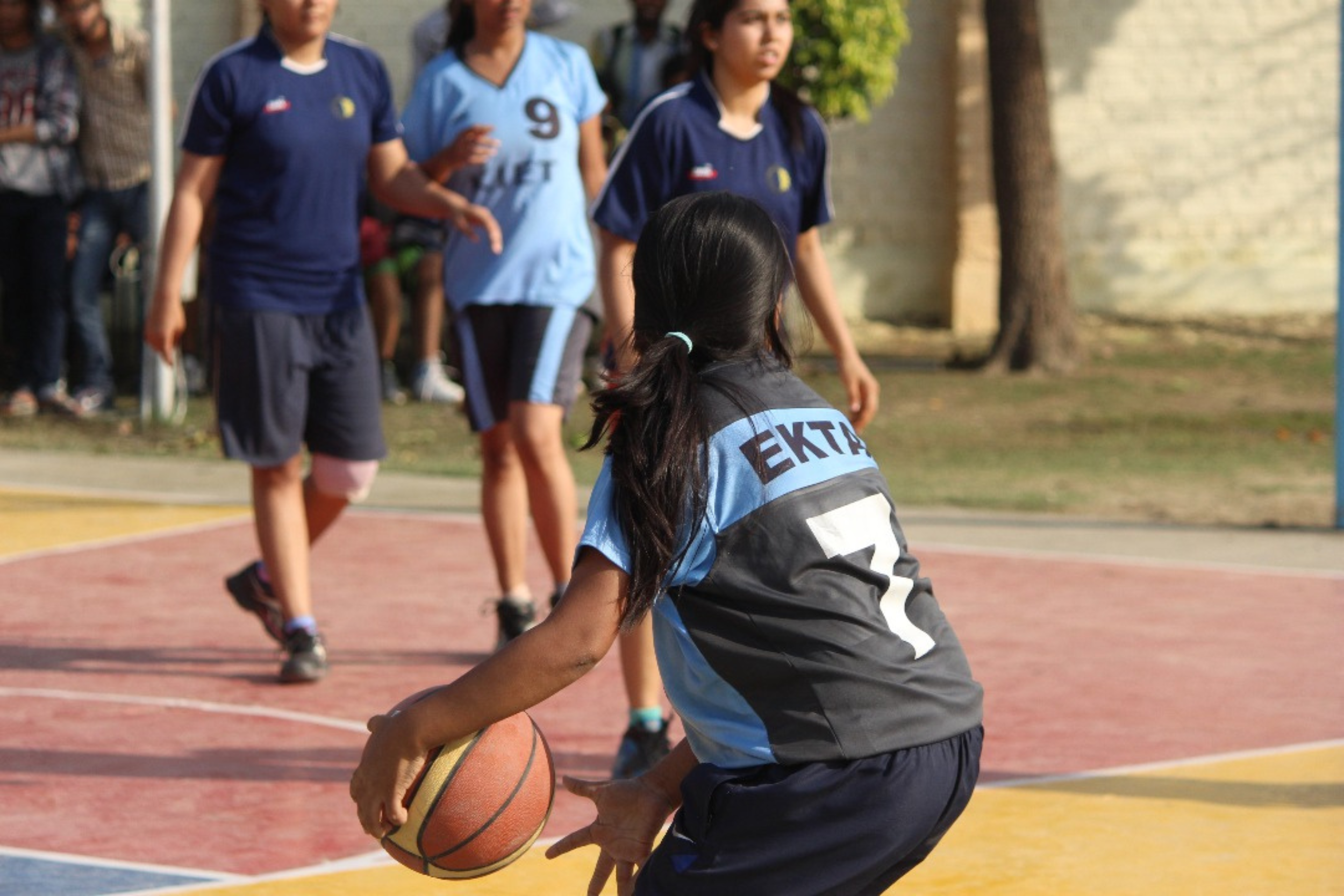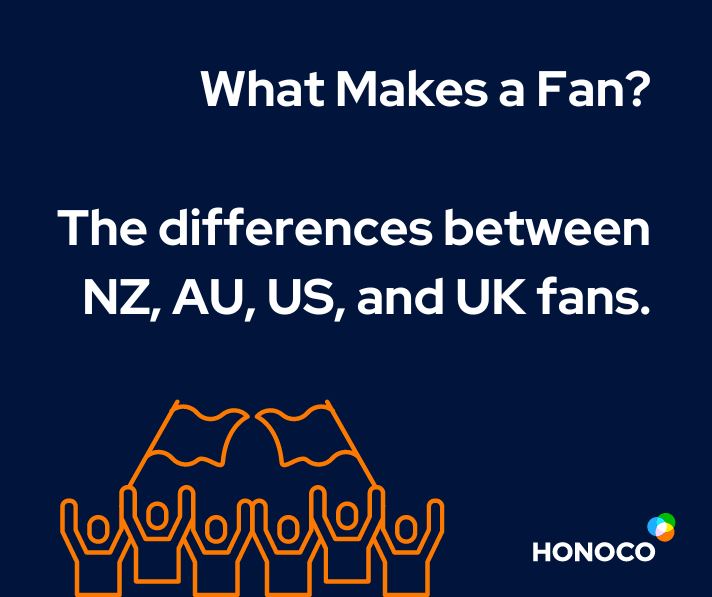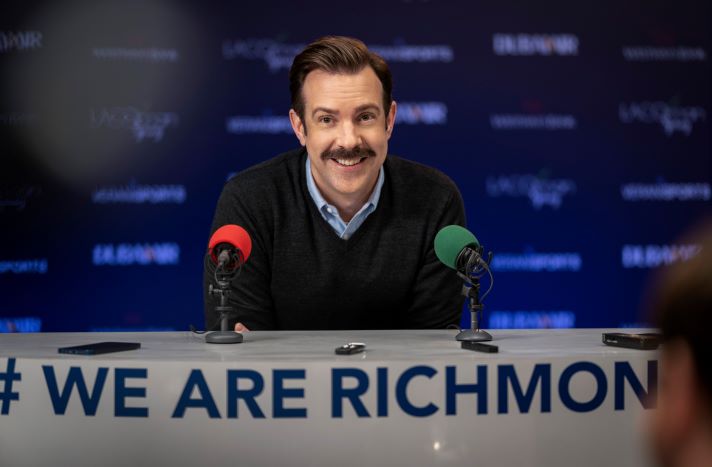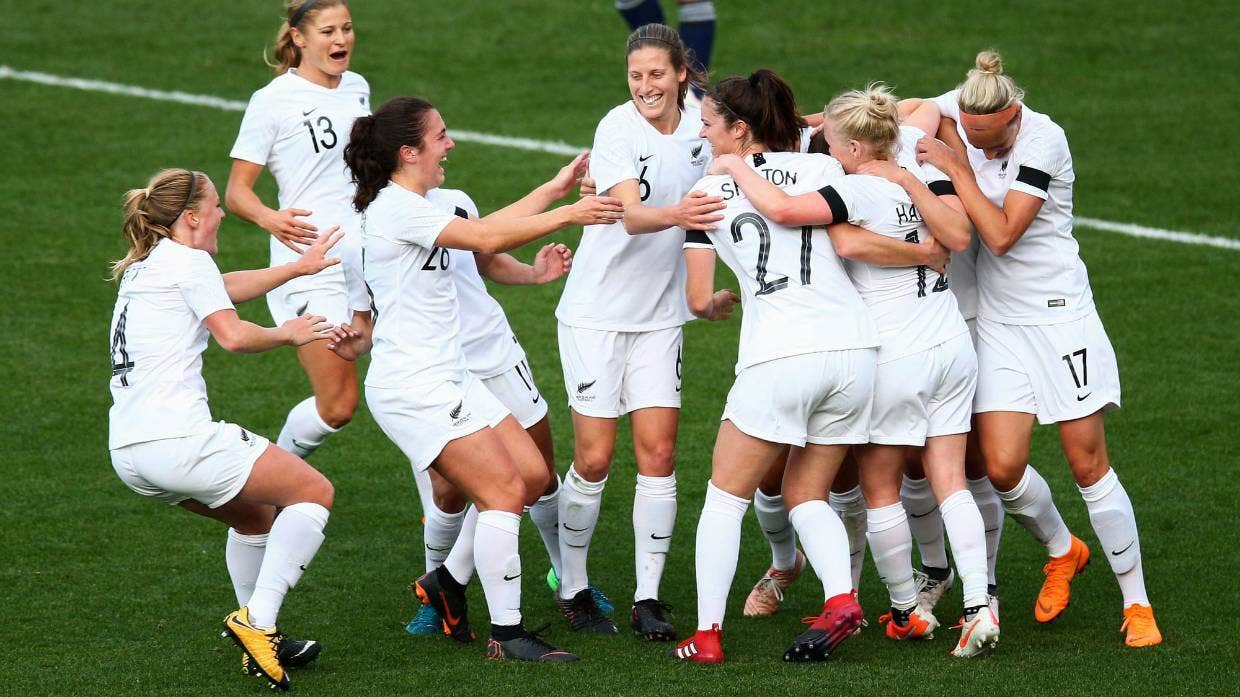Five reasons why sport is a great match for partnerships, plus my worst bad hair day.
Watching the Euros football, the tennis, Olympics, the rugby, and now the return of the Premier League over the last few weeks reminded me of how much I love sport and the huge part it has played in my life. I’m lucky that the career I chose has given me the opportunity to work with some great teams and individual athletes.
Naturally I’m biased, but I’m convinced that sport is one of the best partnership vehicles for a range of organisations, whether they be a corporate brand, government agency, not-for-profit, charity or any other party trying to engage their audience. Supporting this assertion our Honoco research programme found that 89% of New Zealanders were fans of at least one sport.
Why?
1. Sport is a great connector.
It brings people together from all over the world, even in the midst of a global pandemic. I’m not just talking about elite level sport either. Think about it. If you join a sports club in a new town, after the very first training session you’ve made connections with a new group of friends.
You don’t even have to play sports to reap the benefits of bonding with other people. I remember going on a vineyard tour in Northern California where I talked football with a Japanese finance student and a brain surgeon from Buenos Aires! Of course, the wine also helped loosen our tongues, but it was a shared love of football (and vino) that had us sharing stories, opinions and ambitions for the coming season.
Relaxing with a coffee and listening to music is an obvious pleasure, but two major brands made it even more enjoyable, and for a variety of stakeholders. Starbucks partnered with Spotify to use music to enhance the customer experience. But it went far beyond that.

2. Sport guarantees an audience.
That’s why TV broadcasters love it and pay handsomely for exclusive rights. On average only 1 in 8 scripted dramas (e.g. Game of Thrones, Line of Duty, Suits etc.) is a success, whereas a sports league (e.g. EPL, NBA, NRL) brings a guaranteed audience with it. You don’t know what results you’ll get on the playing surface, but you do know there’s a passionate audience who want to watch and will pay for the privilege.
3. Sport provides endless opportunities for storytelling.
Passion for sport is driven by many factors including participation, family & friends, role models, teams (domestic or national), magic moments. There are so many levels to it and storytelling opportunities for brands at every level.
Sport is both cyclical and infinite. There are heroes from the past and the next generation to look forward to. And if a team has one bad season, then there’s always next year so there’s always something to talk about. Movie franchises and music acts eventually run their course and lose their appeal, but sport doesn’t.
4. Sport is imperfect.
Athletes can be unlucky. Referees can be unfair. Sporting organisations can be under-resourced with funding unevenly distributed and most sports suffer from under-exposure. So, there are lots of opportunities for brands to be the fairy godmother or knight in shining armour by supporting those who need it most. If they can act in a way that is seen as authentic, they can very quickly win a loyal audience.
5. Sport is unpredictable.
“You just couldn’t write this script!” How many times have you heard a commentator say that? On their day, anyone can be a hero, beat their own personal best, inspire others, or demonstrate a sporting gesture that tugs at the heartstring.
Reality TV has nothing on sport. In a world where so much is manufactured and processed, sport is tangible, real and reflects the good, bad, beautiful and ugly of the human race.
My Sporting Life
I played football at primary school, including a 0-7 debut defeat when I played in goal (character building the headmaster said!), but then rugby became my passion at high school. I loved the team aspect of it and the fact that a big fat kid like me and a small speedster could work together. My dad was a massive rugby fan and my first rugby game at Twickenham was England versus Scotland in 1993.

There were over 80,000 people in the stadium to watch England triumph and uncharacteristically of their style at the time, they even opened up and scored a few tries too! I recall being blown away by the size of the stadium and with the home side on top, the jokes flew, the songs rang out and the atmosphere was incredible.
I also went to quite a few games at Old Trafford, the home of Manchester United. I became a United supporter because that was the team my grandfather and my mates at school supported. It wasn’t an easy time to be a United supporter though. They were terrible at the time and Old Trafford was a bit of a dive.
This was the late 1980s, before Alex Ferguson found success and transformed the club, and I remember watching a particularly dire match against Wimbledon on a wet Tuesday night and there were only 20,000 people there. The stadium was only half full but there was still something about the atmosphere and the occasion that stuck with me. Visiting Barcelona’s Nou Camp Stadium in 1999 was another religious experience for me, but more on that another time.

The parallels with sport as religion and stadiums as modern cathedrals are obvious. People are deeply loyal, passionate and invested in what’s happening at big sports events more than at practically any other time in their lives. Sport brings out emotions and behaviours that other pursuits or obsessions don’t.
Not too many people know this, but I studied to be an architect and as part of my degree I wrote a thesis on sports stadiums in the UK. It was a few years after the Hillsborough disaster when tragically 96 Liverpool fans died in a crush during an FA Cup semi-final. The Taylor Report following that disaster recommended that all major stadiums convert to all-seater models and so a lot of football clubs were forced to upgrade their stadiums.
One of the people I interviewed for my thesis was Tony Stephens who had been a commercial consultant on Huddersfield Town’s new stadium. Football clubs typically didn’t think as much about the commercial aspects back then. Most stadiums were originally built in Victorian times and the hospitality and facilities were very basic. Tony looked at stadium design through a commercial lens. He advised the club how it could generate revenue — day in, day out — from hospitality, functions, conferences, and retail, instead of just selling match tickets once every fortnight when there was a home game.
When I finished my project, I shared my findings with Tony and explained I was heading overseas to see some of the world. Tony proposed I attend as many sports events as I could while I was away and write a report about the commercial lessons for English sports clubs.

I spent three and a half months in the US and Canada and I went to at least one sports event in each of the 13 cities I visited. One of the highlights was seeing Michael Jordan play three times in two weeks! And of course, the stadiums and arenas were much more advanced than the UK.
When I got back to the UK I sent the report to Tony and a few months later he offered me a job, a marketing role with his new sports management company. His clients were David Beckham, Michael Owen, Alan Shearer, Dwight Yorke and Jamie Redknapp, some of the biggest names in English football at the time.
My job was to plan and manage the commercial activity of the players. I met them after training, accompanied them to photo shoots, TV commercials, media interviews, and sponsor appearances. It was a dream job for a guy in his 20s and it took me to some incredible places. I gave up recounting stories to my mates because they wouldn’t believe me. I can’t blame them. I had to pinch myself sometimes.
One day, I flew on a Lear jet with David Beckham to Barcelona for a Pepsi TV commercial. The first time I met Victoria Beckham I was picking David up for an adidas shoot. We had to wait for her to get ready and when she finally got in the car she was dressed head to toe in Nike! She was making the point that it wasn’t a buy-one-get-one-free (BOGOF) deal!!

Another occasion, Beckham arrived for a Brylcreem commercial with a new shaved crew-cut. Brylcreem had paid big money to style his blonde curtains and here he was looking like Action Man with a number one all over! I had to do some quick thinking and sell the client on the value of them being the first brand in the world to get photographs of Beckham’s new hairstyle. They bought it, but just about.
Our small business got swallowed up by an American agency, so I set up my own business as a concierge and business manager for the players. I continued to work with some high-profile names, including Rio Ferdinand, but I didn’t get the business model right. I was in my mid-20s and it was my first crack at running my own business and I made a few mistakes. But the work I did with the football players was all about partnerships. It was about bringing corporate sponsors and players together to form a partnership that worked for both parties.
Personally, I was ready for a new chapter in my life. I’d been to New Zealand in 1996 as part of my trip around the world and I loved the place and especially the people. From that very first visit, New Zealand felt right. Again, sport played a big part in my decision. I’ll write about that another time.
I’d love to know, what are some of your favourite sporting memories or moments?
What sporting events, bids, wins, losses, achievements or injuries have altered your path?
#partnerships #sponsorship #sport #honoco #marketing




